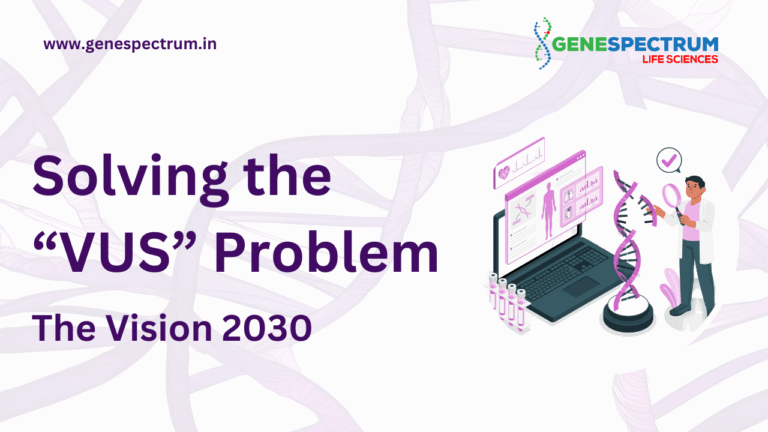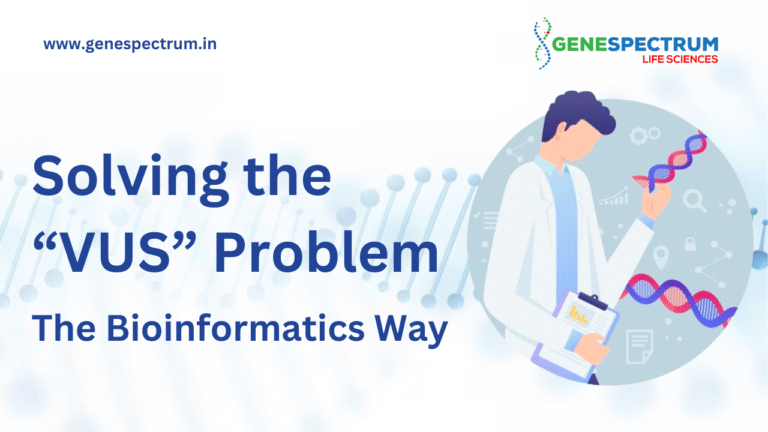Will Variants of Uncertain Significance (VUS) Still Exist in 2030?
Excerpts from the article published in The American Journal of Human Genetics by Douglas M. Fowler and Heidi L. Rehm (https://www.cell.com/ajhg/fulltext/S0002-9297(23)00400-7) In the rapidly evolving field of genomic medicine, a key question remains on the horizon: will we still be grappling with Variants of Uncertain Significance (VUS) by 2030? In 2020, the National Human Genome Research Institute (NHGRI) made a bold prediction: by 2030, the clinical relevance of all genomic variants would be readily predictable, making the classification of VUS obsolete. Despite the optimism, the number of VUS submissions in global genomic databases like ClinVar has only continued to grow. But as we near the decade’s close, there is cautious optimism that the prediction may yet come true. What Are Variants of Uncertain Significance (VUS)? When a genetic test is conducted, the results often include variants—differences in DNA that may be linked to disease. However, not all variants are well understood. A VUS is a genetic variant for which there is not enough information to classify it as either pathogenic (disease-causing) or benign (not harmful). This uncertainty creates challenges for clinicians trying to interpret genetic test results and develop treatment plans. The high prevalence of VUS—currently estimated at around 36% of submissions in ClinVar—reflects the difficulty in connecting genetic variation to clinical outcomes. For patients receiving a VUS result, this often represents a diagnostic “dead end,” leaving them without answers regarding their condition. Why Is Eliminating VUS So Important? In clinical practice, a VUS result can significantly hinder the ability of doctors to guide treatment or predict disease risk. Even though VUS results do not indicate immediate danger, they complicate the patient’s diagnostic journey. The rise in genetic testing has led to a surge in VUS reports, making it increasingly critical to resolve these variants and ensure that genetic insights are actionable. The Path Forward: Advances in Technology and Collaboration In their recent perspective, Douglas Fowler and Heidi Rehm, two leaders in the field of genomic medicine, offer a thoughtful analysis of how the genomic landscape may change over the next decade. While the task of resolving VUS is daunting, several recent advancements offer hope: Will We Get There by 2030? While the elimination of all VUS by 2030 may be overly ambitious, the paper argues that resolving single-nucleotide variants in coding regions is well within reach. Several genes—such as BRCA1 and TP53—already have the necessary tools and data in place to ensure that most VUS will be classified in the coming years. However, challenges remain for structural variants, non-coding regions, and complex genetic changes, where prediction tools and functional assays are not yet advanced enough to provide clear answers. These areas will require ongoing innovation and investment, especially in gene-environment interactions and intergenic variations. As we approach 2030, the question is not just whether VUS will be resolved, but how quickly and efficiently we can achieve this goal. The progress made today will shape the future of precision medicine. Increased collaboration between clinicians, researchers, and data scientists will be essential in driving forward the technologies and policies necessary to realize the NHGRI’s prediction. For patients and families navigating genetic diseases, the resolution of VUS offers hope for clearer diagnoses, more effective treatments, and ultimately, better healthcare outcomes. The choices made now, in terms of research funding, technological development, and global collaboration, will determine whether VUS becomes a problem of the past. To Conclude Will VUS still exist in 2030? The answer lies in the combined efforts of the scientific community to innovate and collaborate. While the complete elimination of VUS may not be realistic, significant reductions are within reach. With new tools, more data, and greater international cooperation, we are on the verge of a future where genomic medicine is more precise and personalized than ever before.
Will Variants of Uncertain Significance (VUS) Still Exist in 2030? Read More »
NGS, Variant Analysis
